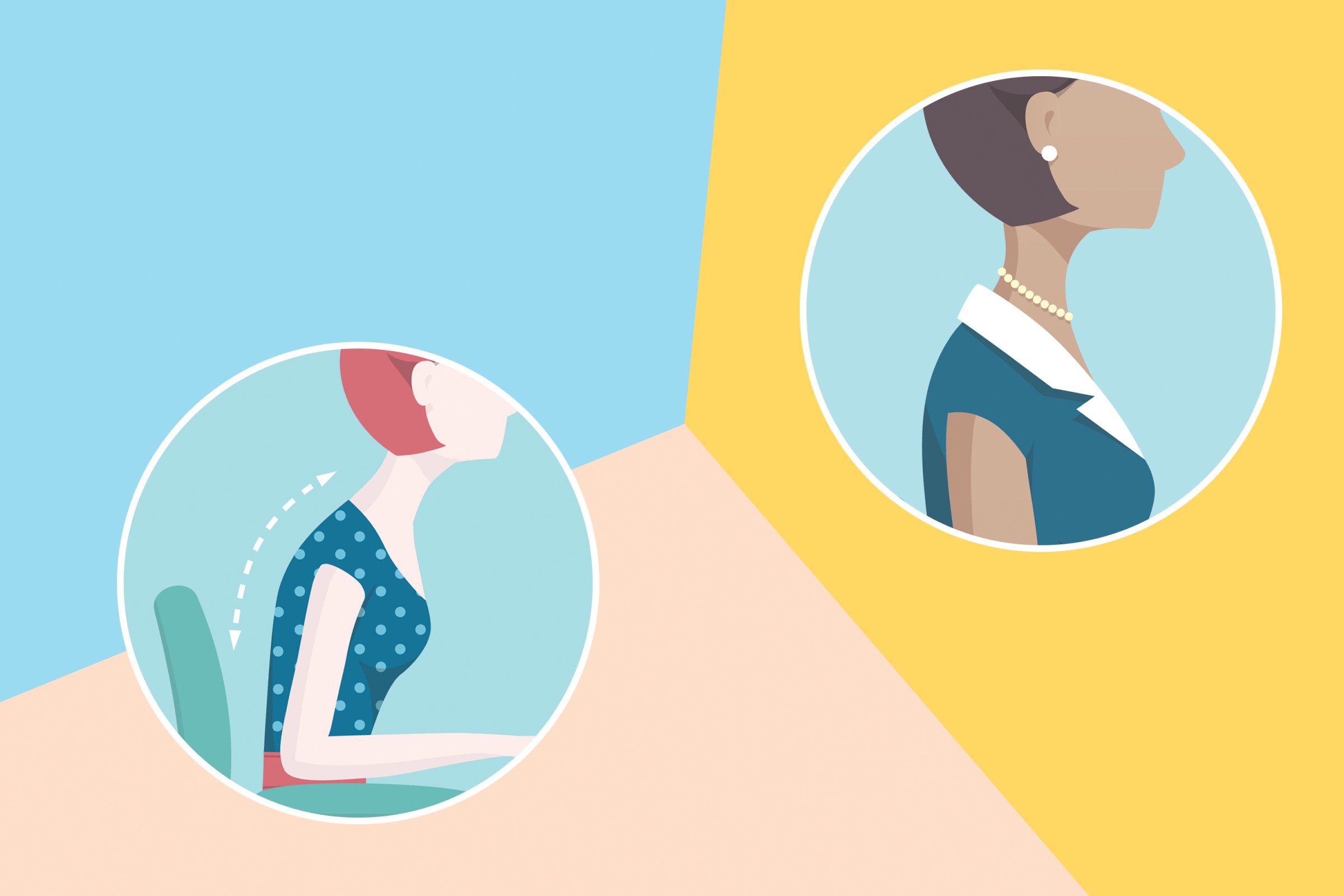
Experts call it “the turtle.” It’s that neck-bent, shoulders-forward, hunched-over position many people assume when sitting all day at work on their computers or texting on their phones.
Even if you begin the workday sitting ramrod straight—your chin held at an angle that would make Emily Post proud—hours of answering emails and reviewing work documents tend to pull you down into the turtle, says Dr. Alan Hedge, director of the Human Factors and Ergonomics Laboratory at Cornell University.
This cramped pose is bad for a lot of reasons, Hedge says. For one thing, it puts pressure on your neck, spine and lower back, which can lead to soreness and injury. This bent-forward posture also pinches nerves in your neck that run down to your arms and hands, which increases your risk for carpal tunnel syndrome and other painful conditions.
And unlike your mother’s warning that making a silly face might make it stay that way, that’s actually true of poor posture.
“Your head weighs 10 or 12 pounds,” says Dr. Mary Ann Wilmarth, former chief of physical therapy at Harvard University and now CEO of Back2Back Physical Therapy in Andover, Mass. Holding it straight engages lots of muscles in your neck and shoulders. But when you spend all day with your head hanging forward, then come home from the office and plop a tablet or phone into your lap, all of those support muscles languish and weaken, she explains.
It won’t happen overnight. But eventually you may find it difficult or uncomfortable to hold your head up and back over your shoulders, Wilmarth says. “You see people who have their heads bent forward, looking at the ground, even when they’re walking down the street,” she says. “This happens because we’re all conforming our bodies and our postures to accommodate our devices, rather than making our devices conform to our bodies.”
So what’s the fix? Both Wilmarth and Hedge stress the importance of a properly arranged workstation.
“The human body is not designed to stay in one position for a prolonged period,” says Dr. Benjamin Domb, an orthopedic surgeon and founder of the American Hip Institute. If you’re spending a big chunk of your day in front of a computer, even small misconfigurations will take a toll, he says. The aim is to be able to sit comfortably and work on your computer without having to crane forward. To do that, you need your monitor at the correct height. “When you’re sitting straight with your head back squarely over your neck and shoulders, the level of your eyes should be an inch or two below the top of your monitor,” Wilmarth says. At the same time, you want your forearms and hands to rest comfortably on your desktop, without having to flex or bend when you type.
People who use a laptop are probably thinking, “How the heck…” And they’re right. Unfortunately, a laptop just isn’t suitable for long stretches of work, Wilmarth says. Raise it up to the correct eye level, and you put your arms and hands in awkward positions that can lead to carpal tunnel and nerve pain. Lower it, and you’re dragging your head forward and down.
Hedge and his team at Cornell have worked out a dozen guidelines for assembling the ideal workstation setup. But both he and Domb say the key to avoiding problems is to change postures frequently. A sit-stand desk configuration or some other arrangement that allows you to switch among a number of different seated or standing positions is one of the best ways to stay out of trouble.
Stretching also helps, Wilmarth says. She recommends taking a break from your computer every hour to slowly rotate your shoulders, squeeze their blades together, stretch your neck, and tuck your chin. All of these help increase blood flow and engage those muscles you neglect when you huddle over your keyboard.
If you spend all day in a car, you want your seat in an upright position that allows your head to sit comfortably and squarely over your neck and shoulders, Wilmarth says. She also stresses the necessity of lumbar support, especially during long drives. “Most people don’t pump that lumbar support up enough,” she says. “You want to feel some pressure on your lower back.”
Finally, what should you do about your phone and other handheld devices to avoid troubles like text neck? You can try to raise those devices up to eye level, but that’s not realistic for more than a few minutes. “Use them less,” Wilmarth says. “That’s about all I can say.”
More Must-Reads from TIME
- Cybersecurity Experts Are Sounding the Alarm on DOGE
- Meet the 2025 Women of the Year
- The Harsh Truth About Disability Inclusion
- Why Do More Young Adults Have Cancer?
- Colman Domingo Leads With Radical Love
- How to Get Better at Doing Things Alone
- Michelle Zauner Stares Down the Darkness
Contact us at letters@time.com